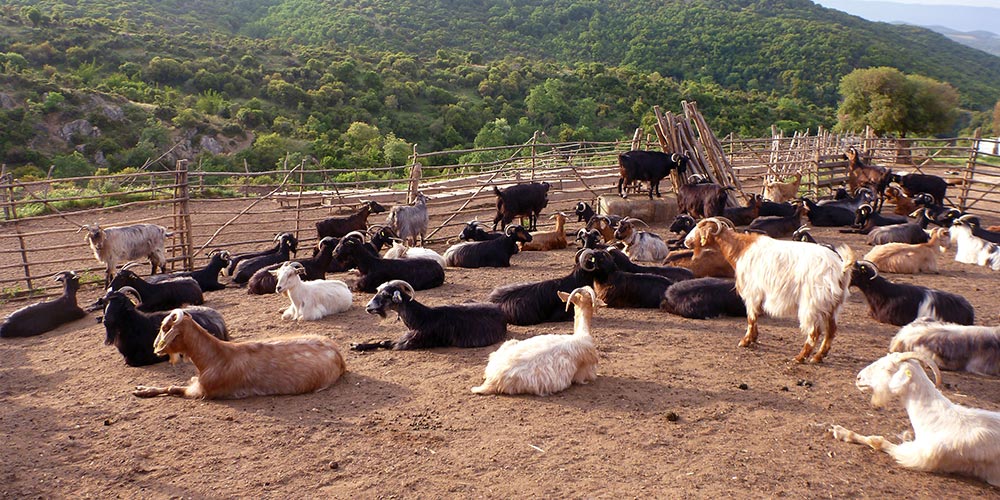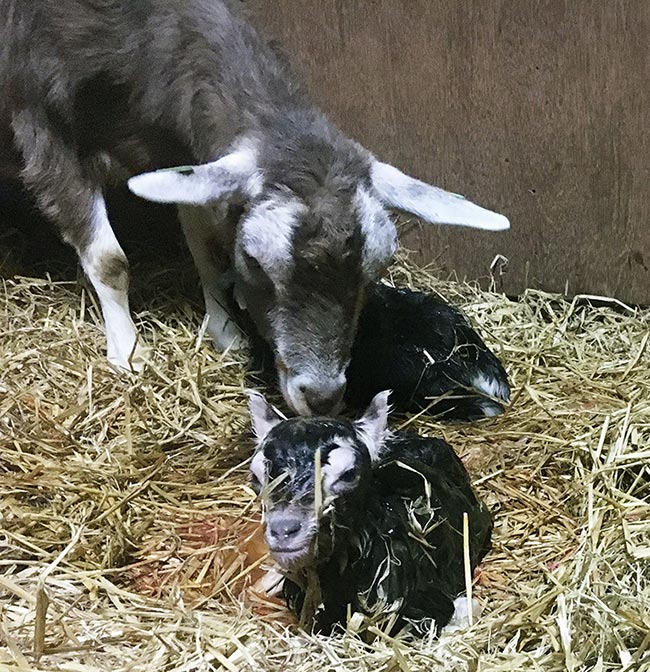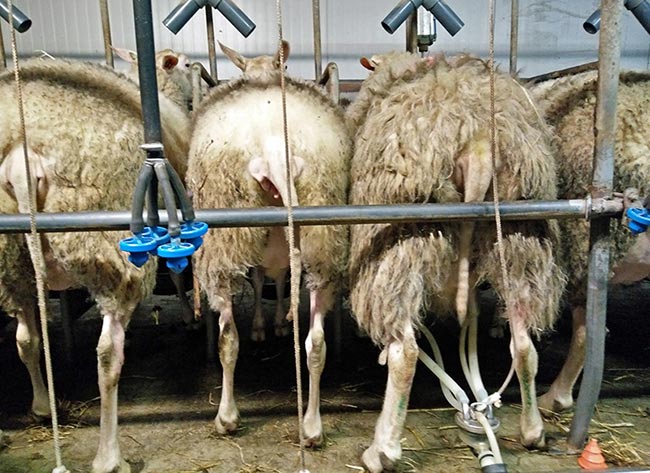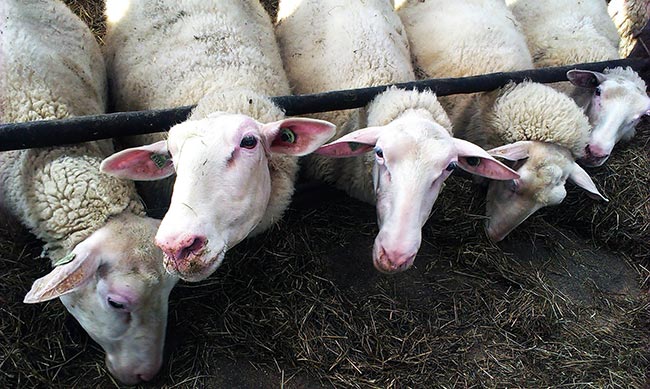7 Aug 2017
Margit Groenevelt looks at antibiotic resistance in dairy sheep and goats, in the UK and worldwide, including causes and control measures.

Although the use of antibiotics within the dairy sheep and goat industry might be lower than in other food-producing species due to licensing, they do run the same risks of developing dangerous levels of antibiotic resistance (AR). Apart from the risks of AR to animal life, dairy sheep and goats are also food-producing species that can harbour zoonotic pathogens, which could, potentially, carry AR over to humans.
As is common in these industries, very little is known about the situation in the UK dairy sheep and goat sectors. Therefore, it is necessary to look at other species within the UK, as well as other countries with larger dairy sheep and goat industries.
Apart from knowing the current levels and the risks the industry is running, it is also important to see what other countries are doing to restrict the occurrence of AR. Although national programmes to decrease levels of AR within food-producing animals are complicated, some promising results are seen in other countries.
This article will cover:
Antibiotic resistance (AR) is, by now, a well-known subject in veterinary medicine.
We are familiar with the disadvantages and trouble AR can cause for humans and animals, and in the possible crossing over of resistant pathogens from animals to humans. Most veterinary research on this topic has been done on the main food-producing species, namely cattle, pigs and poultry, because of the importance of resistant pathogens entering the food chain through animal-derived food products, such as meat and milk.
In comparison to other countries within Europe, the British dairy sheep and goat industry is relatively small, with around 33,000 dairy goats and considerably less dairy sheep (www.sruc.ac.uk). Neither of them, though mostly thriving, are large industries. It is, therefore, not difficult to understand research on the UK situation on AR in these species is sparse.
In southern Europe it is a completely different situation, with four million goats in Greece, three million in Spain and one million in Italy (Eurostat, 2015). These industries are considerably larger than their UK counterpart and, although they farm different breeds and use different farming systems, the knowledge these larger industries create can be very useful to our own system (Figure 1).

Not only can we learn from the same industries in different countries, we can also learn from different species in the western European farming system.
Some of the knowledge gained on different species is clearly directly applicable to both dairy sheep and goats, while some of it is not, for various reasons. For example, although we may not know the way AR spreads in a dairy sheep flock, we do know how some specific bacteria also important in dairy cattle and dairy goats develop resistance in the first place.
We can also learn from the way other countries are dealing with reduction of the use of antibiotics in farmed species to reduce AR. Extensive programmes are put in place in Scandinavian countries, as well as the Netherlands, with some impressive results, without loss to animal welfare.

As the use of antibiotics – in the dairy goat industry especially – has its practical difficulties, the question arises whether these industries are actually under threat of developing serious AR issues. Only one antibiotic is licensed for use in dairy sheep and goats in the UK – enrofloxacine (NOAH, 2017). The fact this is a fluoroquinolone, which is classified as a “critically important antimicrobial” by the World Health Organization (WHO), does question its responsible use if used on a large scale. Because the choice is so limited, the use of antibiotics in dairy sheep and goats is significantly lower in this industry than in its cattle counterpart.
No numbers are available for the UK, but in the Netherlands, where the industry is roughly comparable and has the same licensing issues, we know the “daily dose rate”, a calculated number to indicate the use of antibiotics on farm, was 3.08 on the sampled small ruminant dairy farms (Santman et al, 2013) compared to 5.8 in the dairy cattle industry, before the introduction of very strict antibiotic regulations in 2011 (SDa, 2011). The majority of these prescribed drugs were supplied during spring, suggesting they are mainly being used during the lambing or kidding season, although no numbers are given for what age group the drugs were being prescribed to (SDa, 2011).
As the absence of licensed drugs for lactating animals will discourage the use of antibiotics during lactation, it is likely the majority are being used on kids and adults during the transition period (Figure 2). So, even though the absolute number of antibiotics used within the industry might seem low, if the majority of those are always being used on the same “at risk” groups, it is likely the same pathogens are being repeatedly exposed to the same drugs in a relatively short time period, possibly increasing the quick occurrence of AR on a farm.
When looking at literature from other countries or older reports and what they might mean for the situation in the UK, it is important to remember certain drugs have already been banned in the UK or advancement in knowledge has caused certain active ingredients to not be available anymore. The differences between antibiotic availability and prescription behaviour in different countries across the world probably also plays a role in the different results seen in the literature. Nevertheless, this information can be useful to help inform decisions on the treatment of diseases and prevention of AR occurrence.

Worldwide, in dairy sheep and goats, one of the main causes for mastitis are Staphylococcus species (Figure 3). Staphylococcus aureus is probably the most well known, but coagulase-negative staphylococci (CoNS) play a major role in subclinical and high somatic cell count cases. High levels of AR in CoNS strains were reported in the sheep industry in England in 1997, with 75 per cent of CoNS samples cultured from ovine milk samples testing resistant to at least one antibiotic. Most commonly, this resistance was found to be against trimethoprim, sulfonomides and oxytetracycline (Burriel, 1997).
In Italy, 50 per cent of Staphylococcus epidermidis (a common CoNS) samples were tested, from 14 different dairy sheep farms, showed AR for at least one group of antibiotics, with penicillin/ampicillin (n=50) and tetracycline (n=10) scoring highest (Onni et al, 2011).
With regards to S aureus, resistance has been reported on dairy goat farms in Ireland on milk samples from both the bulk milk and the milk filter. Cultures of S aureus from 7 out of 15 farms indicated resistance to nalidixic acid (n=6; the first quinolone to be used in veterinary medicine), ceftiofur (n=1), streptomycin (n=1) or ciprofloaxin (n=1; Murphy et al, 2010).
In Greece, AR in S aureus seems to be relatively low as well, with 83 per cent of isolates of S aureus from 50 farms being fully sensitive to the tested antibiotics; the only resistance found was against penicillin. Interestingly, when this study looked at the susceptibility of Escherichia coli in milk samples, a marked difference occured between the organic and conventional farms tested. Only four ampicillin-resistant samples (18 per cent) were found, but they were all from conventional farms (Malissiova et al, 2017). Whether this difference would be similar on UK organic farms is unknown.
A report on AR in S aureus and CoNS cultured from dairy goat farms in north-eastern Brazil indicated 100 per cent resistance against ampicillin, as well as varying resistance levels against 11 other antibiotics (Lira et al, 2016).
MRSA has been isolated from dairy sheep and goats in England, Italy, Spain and China (Ariza-Miguel et al, 2014; Burriel, 1997; Carfora et al, 2016; Yuan et al, 2017), indicating dairy sheep and goats can also harbour this potentially very dangerous zoonotic agent.
Unfortunately, no literature was found on dairy goats or sheep with regards to diseases affecting young kids caused by E coli, such as watery mouth or diarrhoea.
It is reported in calves, the feeding of waste milk from cows being treated with antibiotics has a negative impact on the susceptibility of E coli and Pasteurella those calves carry in their digestive and respiratory tracts (Maynou et al, 2017).
In Sweden, risk factors for increased AR of E coli in calves included oral treatment with streptomycin and the feeding of waste milk (Duse et al, 2015). Both of these risk factors could play a role in the UK situation, as these are common practices on UK farms.

Although the level of AR in the dairy sheep and dairy goat industry in the UK remains unclear, it is obvious from other countries and other species, the risk of development of AR and the human health implications are not to be ignored (Figure 4).
Throughout Europe, individual countries are implementing measures to reduce the amount of antibiotics used and decrease the level of AR found in pathogens.
In the Netherlands, measures to decrease the total amount of antibiotics used in the veal, pig, poultry and dairy cattle industries were implemented in 2011. The goal was to reach 50 per cent reduction – reference level 2009 – by 2013. This seemed a very ambitious goal; however, it was reached before the end of 2012, without significant loss to animal welfare (SDa, 2013).
In the following years, the reduction continued at a slower pace, and, in 2015, was 35 per cent for veal, 56 per cent for pigs, 60 per cent for poultry and 46 per cent for cattle. In this time, the use of fluoroquinolones and third or fourth generation cephalosporins has decreased to an overall level of 0.005 daily dose rate (SDa, 2017).
The small ruminant sector is not monitored as much, but as it is affected by many of the same regulations, antibiotics have been made less available and, as such, at least some decrease in use is suspected. The effect this reduction has had on the susceptibility of bacteria varies per animal and bacterial species. Monitored on the basis of susceptibility of faecal E coli sampled from healthy animals, the reduction of AR against one or multiple antibiotics ranges from 26 per cent in the veal sector to 8 per cent in the poultry sector (SDa, 2016).
AR does play a role in dairy sheep and dairy goats, and has zoonotic implications, as in other species. Prudent prescription and use by farmers remains an important feature in reducing AR and vets play an important role in educating farmers. Results in other countries indicate not all hope is lost and, in a well-organised system, antibiotic use can be reduced, as well as certain existing resistance patterns reversed.